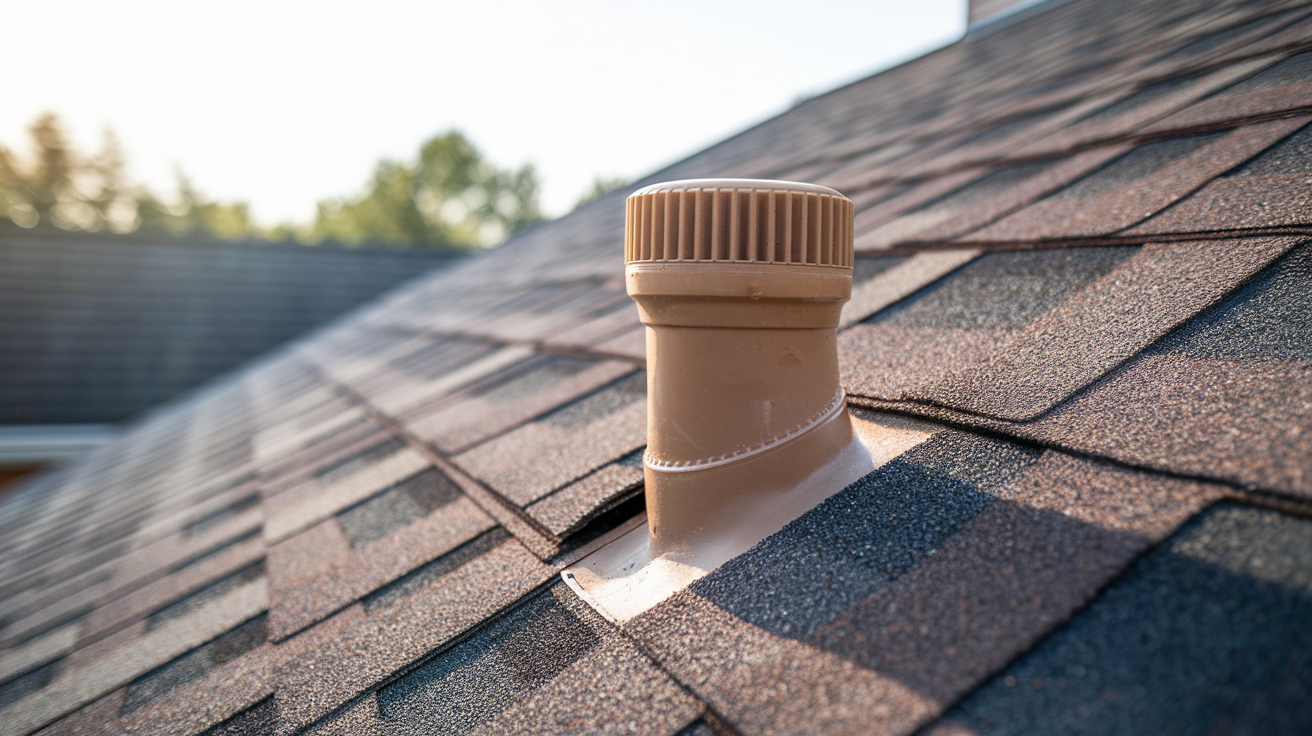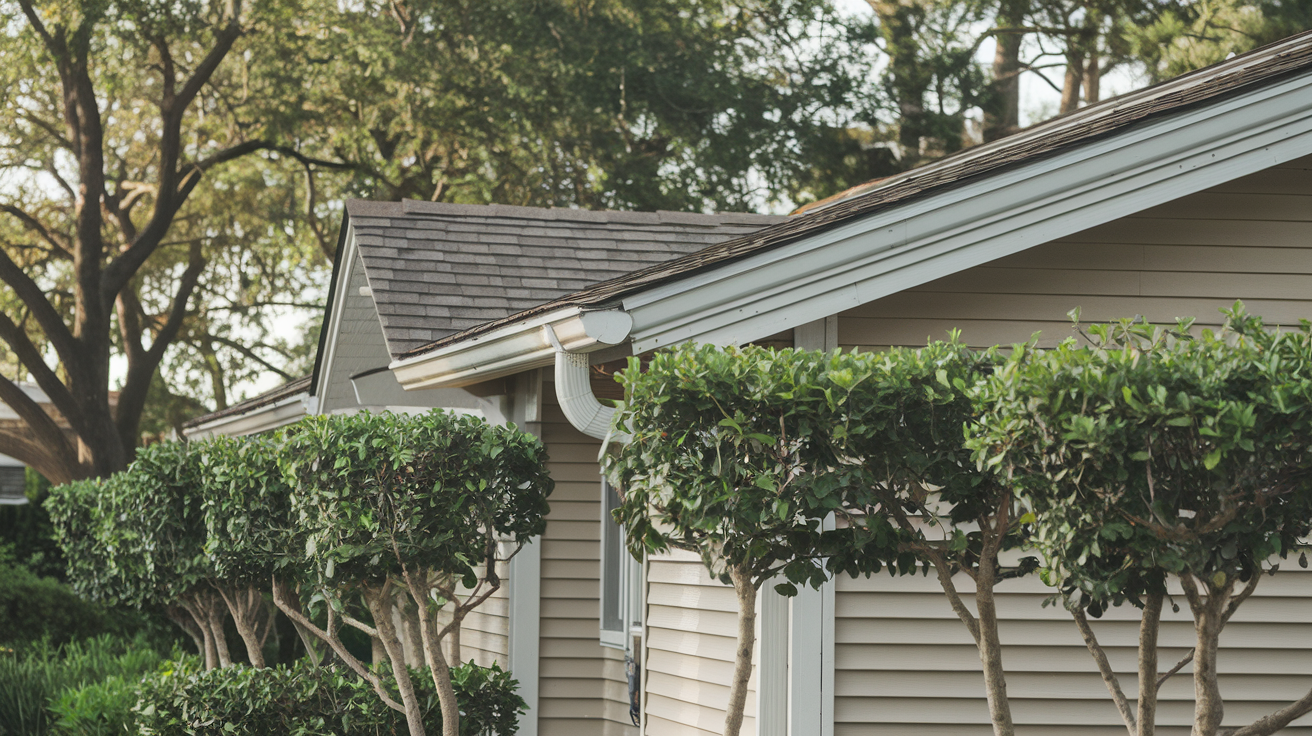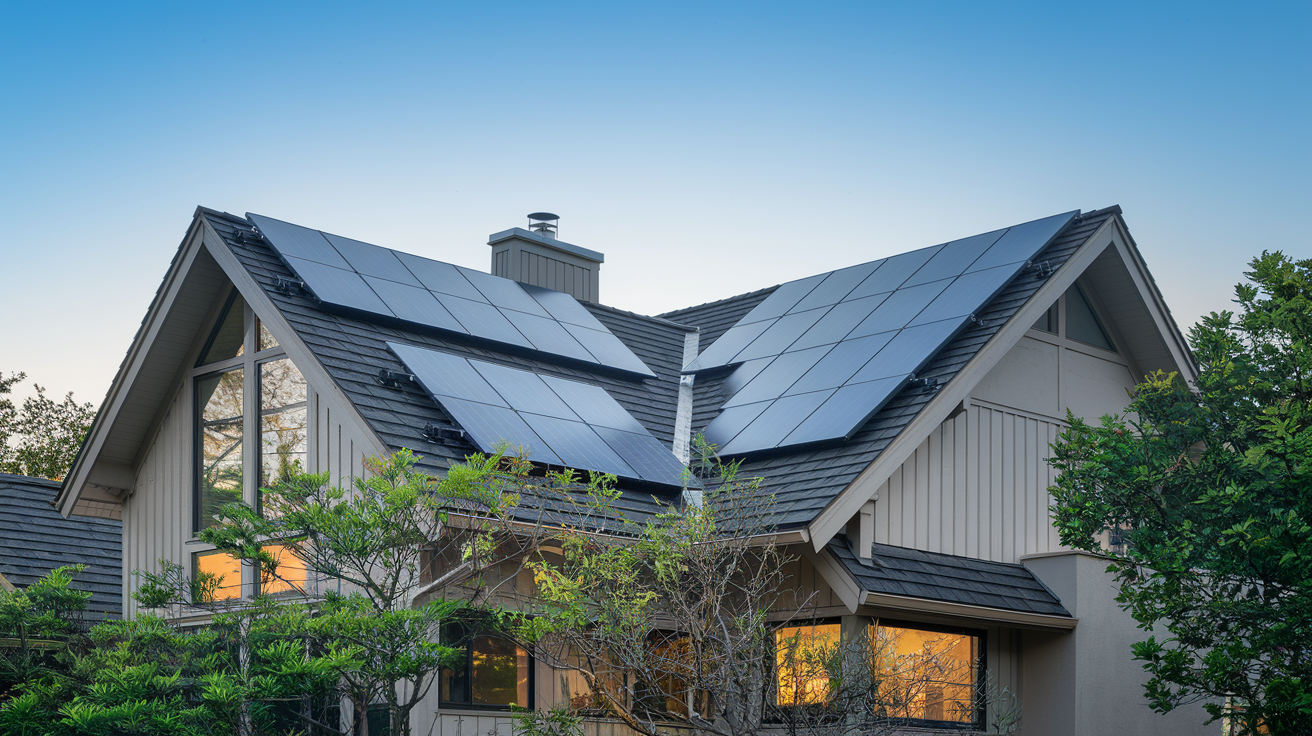Ultimate Guide: Prevent Costly Roof Boot Leaks & Extend Your Roof's Life
Every year, thousands of homeowners face unexpected water damage from a surprisingly small culprit - failed roof boots. These seemingly minor components protect your home where pipes and vents penetrate your roof, but when they fail, the consequences can be severe. Studies show that 95% of roof leaks occur around these penetrations, leading to costly repairs averaging $1,000 to $3,000 in water damage alone.
Your home's roof boots are constantly battling against sun exposure, temperature changes, and severe weather. Without proper maintenance, these critical seals can crack, warp, or separate from your roof - often silently damaging your home before you notice the first water stains. Understanding how to spot, prevent, and address roof boot failures could save you thousands in repairs.
In this comprehensive guide, you'll learn how to identify early warning signs of roof boot failure, choose the right materials for your climate, and implement proven maintenance strategies to protect your home. We'll also cover when to attempt DIY fixes versus calling a professional, helping you make informed decisions about your roof's care.
Table of Contents
- Understanding Roof Boots and Their Purpose
- Key Statistics on Roof Boot Failures
- Common Causes of Roof Boot Failures
- Identifying Roof Boot Leaks
- Preventing Roof Boot Failures
- Repairing Roof Boot Leaks
- Conclusion and Best Practices
Introduction to Roof Boot Failures
Roof boots are essential for a sound roof. They protect areas around pipes and vents, preventing water from entering your home. These areas are called roof penetrations—anywhere something sticks through your roof. Failed roof boots are a common cause of roof leaks, leading to expensive repairs and damage to your home's structure. Understanding why roof boots fail and how to prevent it protects your investment.
Understanding Roof Boots and Their Purpose
Roof boots, or vent boots, waterproof the areas around roof penetrations. They're usually made of rubber or silicone to handle weather and temperature changes. They create a tight seal, pushing water away from the opening. This prevents water from getting in around plumbing vents, exhaust pipes, and other things that go through your roof. Roof boots also help your home's energy efficiency by maintaining the roof's insulation and preventing heat loss or gain. A damaged boot can increase energy bills by letting air escape, making your HVAC system work harder. Proper installation and maintenance, like using durable roof boots, are key for effectiveness. Learn more about roof maintenance.

Key Statistics on Roof Boot Failures
Roof boot failures happen more often than you think. Studies show about 70% of homeowners will experience a roof leak, with many stemming from issues with roof boots or similar penetrations. About 95% of roof leaks start at flashings and penetrations, including areas with roof boots. Regular checks and maintenance are important to prevent leaks and make your roof last longer. This includes checking for cracks and cleaning around penetrations. Check your roof boots visually twice a year, during spring and fall. Get Your Roof Assessment.
| Cause | Description |
|---|---|
| Improper Installation | Gaps or weak spots allowing water penetration |
| Weather Conditions | Sun, storms, wind, and snow causing material wear |
| Material Deterioration | Cracks and wear over time, leading to failure |
| Debris Accumulation | Leaves and branches holding moisture, accelerating breakdown |
Common Causes of Roof Boot Failures
Several factors can cause roof boots to fail, leading to water damage if not fixed quickly. Incorrect installation is a common problem, as gaps or weak spots can let water in. Weather conditions like sun, storms, wind, and snow can also wear down the boot material over time, causing cracks. Roof boots eventually wear out and need replacing. Debris like leaves and branches can also cause damage by holding moisture and making the boot break down faster. Regular maintenance and repairs, like replacing boots or adding sealant, are key for a long-lasting roof.

Identifying Roof Boot Leaks
Understanding how to identify roof boot leaks early can prevent costly damage. Roof boots seal around pipes and vents, protecting your roof from water intrusion. These areas are particularly vulnerable to leaks, especially lower on the roof where water collects. If these boots fail, water can enter your home, leading to issues like water stains, mold, and structural damage. We'll cover the warning signs of failing roof boots, indoor and outdoor leak indicators, and effective inspection methods. Consider scheduling a Get Your Roof Assessment for a professional evaluation.
Warning Signs of a Failing Roof Boot
Water stains on your ceilings or walls are often the first sign of a failing roof boot. These stains typically appear after rain or snow. Mold or mildew growth is another indicator of moisture problems, often appearing in attics or near the affected areas. Increased energy bills can also be a sign, as water damage to insulation reduces its effectiveness. To learn more about roof maintenance, visit our comprehensive guide.
Indoor and Outdoor Leak Indicators
- Discolored ceilings and peeling paint
- Warped wood and water stains
- Cracked or missing shingles near vents or pipes
- Visible cracks or gaps in the roof boot
Tools and Techniques for Effective Inspection
Inspecting your roof boots effectively requires the right approach. Start with a visual check from the ground using binoculars. Regular roof maintenance, including inspections at least twice a year (spring and fall), helps prevent deterioration. For a closer look, use a ladder to safely access the roof. Wear non-slip shoes and consider a safety harness. Inspect the boots for cracks, gaps, or wear. A moisture meter can help find hidden moisture in your roof or walls. If you're unsure about inspecting yourself, a professional roofer can assess your roof boots and recommend repairs. Contact us for a Get Your Roof Assessment.
Preventing Roof Boot Failures
Preventing roof boot failures is essential for maintaining a sound roof and avoiding costly leaks. Roof boots seal around vents and pipes that protrude from your roof. These small but critical components can fail if not properly installed or maintained. Understanding how to prevent these failures can save you significant time and money.
Choosing the Right Materials for Longevity
The right materials are the first step toward long-lasting roof boots. Common materials include rubber, silicone, and metal, each with its own benefits.
Rubber Roof Boots
Rubber boots are a popular choice due to their flexibility and affordability. This adaptability allows them to conform to various pipe and vent shapes.
Silicone Roof Boots
Silicone boots stand out for their durability and resistance to temperature extremes, making them well-suited for harsh climates. This resilience helps prevent cracking and deterioration.
Metal Roof Boots
Metal boots, typically aluminum or copper, offer excellent durability. Copper is often favored in high-end or historical renovations, accounting for an estimated 10% of such projects due to its aesthetic appeal and longevity. When selecting a material, consider your local climate and the type of roofing system you have. A metal roof, for instance, can last 40-60 years, so choosing a boot with similar durability makes sense. You should learn more about roof maintenance to make informed decisions about material selection.
Proper Installation Techniques to Avoid Issues
Even the best materials will fail if not installed correctly. Proper installation is crucial for preventing roof boot failures.
Ensuring a Tight Seal
The boot must fit snugly around the pipe or vent, creating a watertight seal. Any gaps can allow water to penetrate, leading to leaks.
Secure Flashing Attachment
The flashing, the metal part that connects the boot to the roof, must be firmly attached to the roof deck. This prevents wind uplift and water entry.
Benefits of Heat-Welded Seams
Heat-welded seams, used in EPDM, TPO, and PVC roofing, provide enhanced durability. These seams create a continuous, strong bond. Industry data suggests that for every 10,000 square feet of these roof types, there are about 15,000 lineal feet of potential seam leaks if not heat-welded. Hiring a certified professional is the best way to ensure proper installation and reduce the risk of future problems. Consider getting a Get Your Roof Assessment to ensure your roof is in top condition.

Importance of Regular Maintenance and Inspections
Regular maintenance and inspections are key to catching small problems before they become big ones.
Preventing Deterioration
Neglecting maintenance can shorten the lifespan of your roof boots and lead to leaks. This includes clearing debris from around the boots.
Bi-Annual Inspections
Inspect your roof twice a year, in spring and fall, to look for signs of wear and tear. Replace any damaged boots promptly. Even small cracks can allow water in and cause damage to the roof deck or insulation.
Clear Gutters and Drains
Keeping gutters and drains clear prevents water buildup, which can damage roof boots. Lower roof penetrations are particularly vulnerable to this type of damage.
Regional Considerations for Roof Boot Durability
Climate significantly affects roof boot durability. Extreme weather puts extra stress on these components.
Warmer Climates
In hot climates, white PVC roofs can improve energy efficiency and protect roof boots by reflecting sunlight. This reduces heat stress and prevents premature wear.
Tailoring to Your Region
Adapting materials and installation methods to your specific climate improves boot longevity. This might include specialized sealants for high-wind areas or durable materials for regions with heavy snow. Addressing these regional factors can help you avoid being one of the many homeowners who experience roof leaks.
Repairing Roof Boot Leaks
Roof boot leaks can cause significant water damage if not addressed quickly. These leaks often happen around roof penetrations like pipes, vents, and chimneys, where water can get in and cause mold, structural damage, and higher energy bills. Knowing how to fix these leaks is key to keeping your roof and home in good shape. This section covers temporary fixes and long-term solutions, helping you decide whether to repair or replace your roof boot. Consider scheduling a Get Your Roof Assessment to identify potential problems early.
Temporary Fixes for Immediate Concerns
When you spot a leak around your roof boot, taking action right away can prevent more damage. Temporary fixes are great for stopping leaks fast, especially in bad weather like heavy rain or high winds with debris when you can't do a permanent repair. These temporary fixes give you time to schedule a proper repair.
- Sealant Application: Putting waterproof sealant around the roof boot creates a quick barrier against water. This is easy and affordable, but the sealant must be compatible with your roof material.
- Use of Rubber Tape: Another temporary fix is putting rubberized tape over the cracked or worn parts of the boot. This tape can handle harsh weather, offering a short-term solution until you can do a permanent repair.
These temporary fixes are helpful, but they're not long-term solutions. Check the area regularly to make sure these temporary fixes are working until a more permanent repair is done. If the sealant cracks or the tape peels, reapply it or consider a permanent fix. Check the area after a rainstorm or periodically inspect your attic for water damage. To learn more about roof maintenance, visit our comprehensive guide.
Long-Term Repair Solutions and Costs
A permanent solution to roof boot leaks requires proper repair or replacement. Long-term fixes often involve hiring a professional to ensure the job is done right and your roof stays in good condition. This is especially important for complex roofs or if you're not comfortable working at heights. Industry data shows that a significant percentage of roof leaks occur at flashings, so proper installation and repair around these areas is crucial.
- Professional Repair: Hiring a roofer to fix the boot and surrounding shingles can solve the problem. This usually involves resealing the boot and replacing any damaged shingles or flashing. Professional repairs usually cost between $150 and $300, depending on the damage and local labor rates.
- Full Replacement: If the roof boot is badly damaged or old, replacing it may be the best option. Replacing a boot usually costs between $250 and $500, depending on your roof and the type of boot.
Long-term repairs make your roof last longer and prevent future leaks and related damage, like mold, warped floorboards, or even structural problems, which are much more expensive to fix.
When to Consider Replacement vs. Repair
Deciding whether to repair or replace your roof boot depends on a few things: the boot's age, how bad the leak is, and your budget. A reputable roofing contractor can help you make the right choice.
- Age and Wear: If your roof boot is getting old, replacing it is often better than frequent repairs. Roof boots typically last 10-15 years, but harsh weather like intense sun or heavy snow can shorten their lifespan.
- Extent of Damage: For small leaks and minor damage like small cracks, repairs are a good option. But extensive damage, like large holes or significant rust, or recurring leaks, might mean you need a replacement to avoid constant repairs.
- Budget Considerations: Replacing a boot costs more upfront, but it can save you money in the long run by preventing repeated repairs and water damage to your home.
Conclusion and Best Practices
This section summarizes key takeaways regarding roof boot failures and offers best practices for preventing leaks around pipes and vents. Understanding these failures is crucial for preserving your roof's integrity and protecting your home. Roof boots play a vital role in waterproofing, shielding penetrations like plumbing vents, electrical conduits, and exhaust pipes from water intrusion. Neglecting these components can lead to significant consequences, including structural damage and expensive repairs.
Cost Implications of Roof Boot Failures and Repairs
Ignoring roof boot problems can quickly escalate repair expenses. Water stains on ceilings or walls often signal a leaky roof boot and warrant immediate attention. These repairs can range from patching the boot to complete replacement and even addressing water damage to the surrounding roof deck or interior ceiling. Repair costs vary based on the damage's extent. A minor repair might cost a few hundred dollars, while extensive water damage could result in bills totaling thousands. Proactive maintenance, including regular inspections and replacing aging roof boots, can prevent these costs and maintain your home's value. Schedule a roof assessment to identify potential issues early.
When to Call a Professional Roofer
Recognizing when to contact a professional roofer is key to preventing further damage. If you detect signs of leaks or suspect a roof boot failure, consult a roofing expert. Professionals possess the expertise to identify subtle issues invisible to the untrained eye, such as minor cracks or improperly sealed seams, providing comprehensive solutions to prevent future leaks. Experienced roofers can pinpoint the leak's source, assess the damage, and recommend the best repair strategy. They also ensure correct roof boot installation and maintenance, crucial for effectiveness. By hiring a professional, you ensure proper repairs, protecting your home from potential water damage. To learn more about roof maintenance and the importance of professional inspections, visit our website.
Disclaimer: This blog post is intended for informational purposes only and should not be considered professional roofing advice. Always consult with qualified roofing contractors and insurance professionals for specific guidance regarding your individual circumstances.
